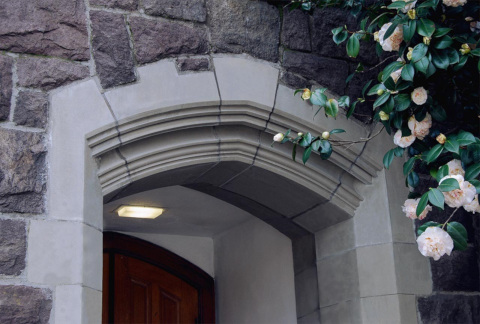Northeast Portland's Westminster Presbyterian Church was designed by Ellis Lawrence, and completed in 1914. We were engaged to replace four deteriorated sandstone entryway arches, each a distinct size and profile, on this carved sandstone building. We worked with the masonry restoration contractor to develop a design scheme that involved cutting back the original stone (much as a tooth is prepared for a crown) and the installation of new, thin-shelled GFRC veneers.
The project allowed the time to proof our approach on the smallest condition, so we captured the profiles and sizing from that arch using conventional templates and measurements. We discovered that while the hand carved arches appeared very symmetrical, there were substantial variations from part to part. Numerous trips to the jobsite were required to take dimensions, modify our design approach to accommodate the inconsistencies, and complete the archway prototype. From there it was agreed the irregularities of the old building necessitated a laser scan of the additional archways, which enabled us to create 3D digital models for our mold and part construction.
Before and After Photos


Irregularities are part of the nature of working with historic buildings. Whether the original façade is hand-carved sandstone or a sheet metal cornice, years of settling and shifting can result in unexpected differences from one corner to the next. Digital scanning offers some real benefits to the historic restoration field. Not only can we use it to detect and measure those variations, but it can also serve as a sort of insurance policy when the original façade cannot be removed without completely damaging it. Often, especially with terra cotta, there is concrete backfill in the parts which makes an intact removal of the parts impossible. Once the building is scanned, a digital record of the parts exists that can be used to recreate them using a CNC machine. Or it can be used as a guide for our toolers, who can recreate the model from scratch, even if the original parts no longer exist.
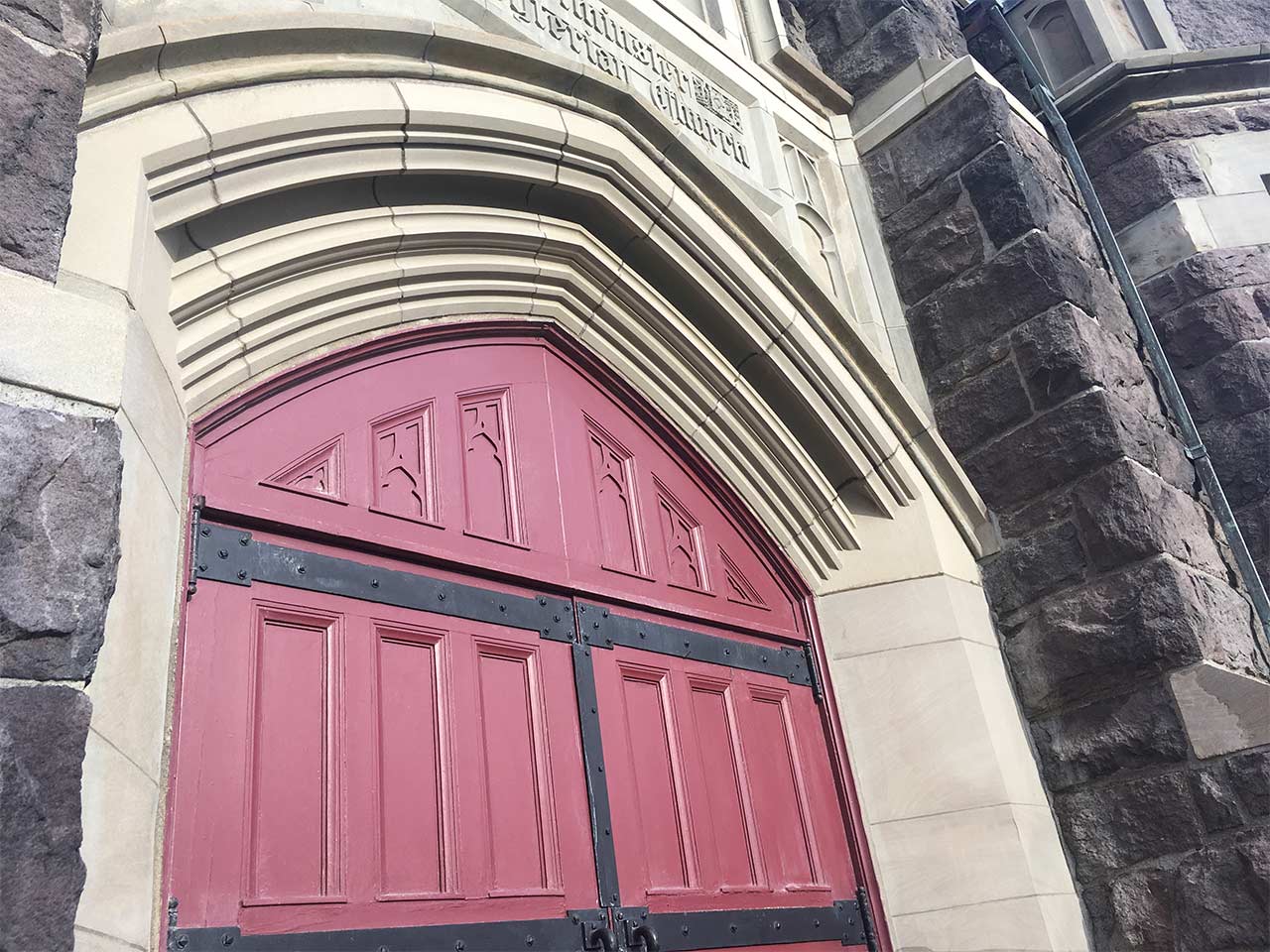
Previously Completed Phases



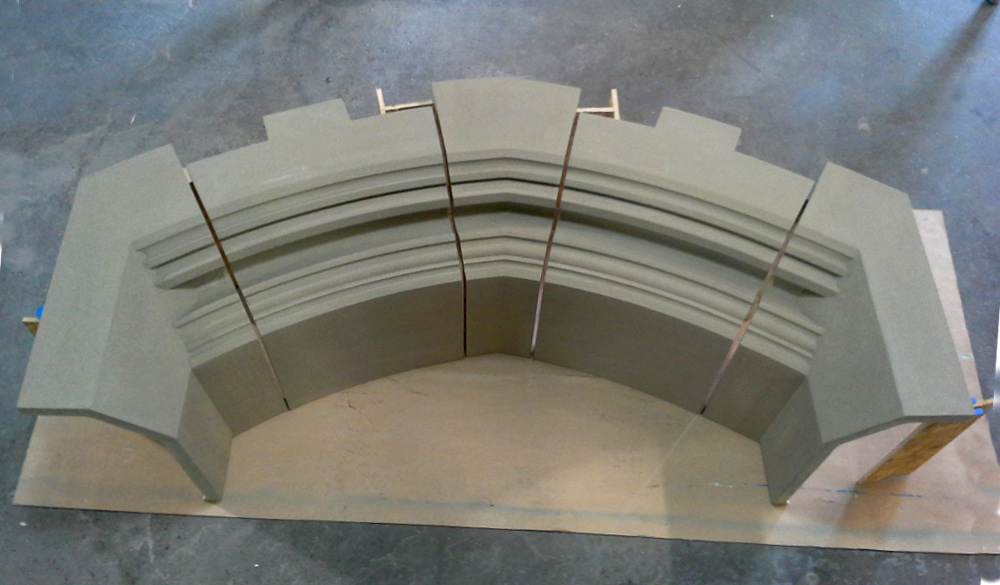
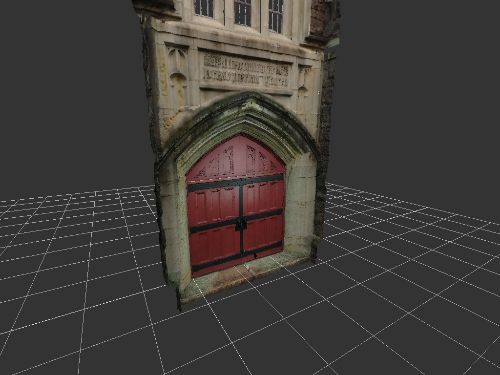

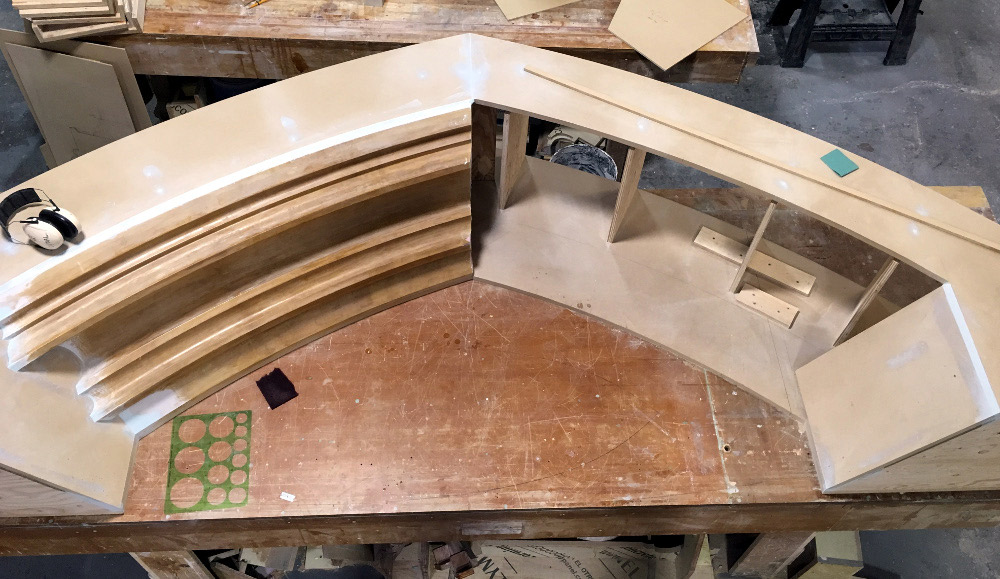
In the case of Westminster Church, scanning allowed us to create parts that perfectly fit the imperfect archways. The same veneer strategy used to proof the first replacement was employed for the remaining entrances, aided this time by digital files that contained each joint and measurement.
It let us take considerably less trips to the jobsite, and we enjoyed the opportunity to explore possibilities offered by new technologies.
